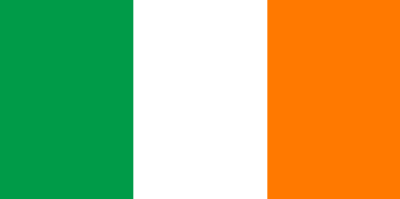This is a guest post by Derek Butler, CEO of GRID Finance
The Market
The peer to peer lending market remains small in the Republic of Ireland. Across all types of peer to peer finance (donation, equity, lending and donation) we estimate that the size of the market in Ireland in 2015 is a maximum of 50 million EUR. This is however growing quickly, particularly with the arrival of Kickstarter in 2014 to the Irish market. GRID Finance is one of two peer to peer lending platforms in the Irish market – both provide access to small business loans. There are currently no consumer focused peer to peer lending platforms in Ireland. GRID focuses on small business loans up to €75,000. Irish based peer to peer lending platforms are both an alternative and competitors to the Irish banks. In aggregate, 4 billion EUR in small business lending is secured by Irish SME’s (Small, Medium Enterprises) annually.
Small business lending in Ireland continues to be dominated by AIB and Bank of Ireland, the two ‘Pillar’ banks of the Irish banking system. These banks struggle to serve the small business lending market due to the cost of product delivery, credit risk profiles, regulatory challenges and legacy distressed debt issues in the sector.

Regulation
Peer to peer lending is not regulated in the Republic of Ireland. The Central Bank continue to monitor the space and are seeking a pan-European directive to regulate it. The recent announcement of the Action Plan for the Capital Markets Union has dispelled this as it outlines its reluctance to regulate the space at a Pan-European level while the industry is in its infancy. Local peer to peer lenders are seeking the Irish Government’s Department of Finance and The Central Bank of Ireland to support the development of the P2P lending space with a regulatory approach based on the UK’s FCA regime. The government’s strategy for the International Financial Services centre also calls for supporting Dublin as a premium location for Domestic and International Fintech start-up businesses. The introduction of a regulatory regime is key to building confidence and trust in this emerging sector and will act as a buffer from the arrival of weaker platforms into the market.
Opportunities and challenges
Opportunities
- For GRID Finance we believe that the non-bank SME finance market can rise to €400 million in the Republic of Ireland within 3 years. Peer to Peer lending can consume a significant, if not a majority portion of this in due course.
- On the consumer side there remains an opportunity for consumer peer to peer lending but the market for consumer lending remains weak and entry into consumer lending will result in significant compliance and regulatory requirements.
- The lack of bank competition and the legacy impact of bank-bailouts results in a significant market opportunity for non-bank finance players.
Challenges
- Low levels of awareness of peer to peer lending will make it difficult for peer to peer lending platforms to scale in what is a small market (total population of 4.5 million). Scaling will occur over a medium-term horizon.
- The lack of a regulatory framework will make it difficult for peer to peer lending platforms to attract liquidity finance from institutional sources.
- A lack of switching guidelines and behaviour will make the adoption of peer to peer lending and non-bank finance more generally difficult.
Ireland remains an exciting location for peer to peer lending but given its market size will remain modest, when compared with global banking and P2P lending volumes. Nonetheless as a sophisticated, stable and very open economy it is an excellent location for peer-to-peer lenders who wish to test a European market or use it as a location for expansion elsewhere. These positive market dynamics are compounded by the excellent start-up culture in Dublin (see http://www.dublinglobe.com/), a well-educated English speaking workforce and Eurozone membership.
For more information on peer to peer lending in Ireland contact GRID Finance directly at www.grid.finance ; +353 1 524 1615
